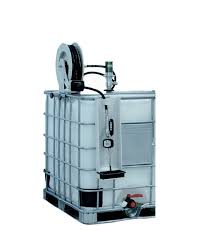IBC is an abbreviation for Intermediate Bulk Container. IBC containers are an abbreviation from flexible containers, the use of which for the transportation and storage of liquid and dry materials is very wide. This paper is aimed at covering some issues of IBC tanks, such as its use, design, ways of cleaning, and some terms referring to IBCs.
Definition of an IBC
IBC tank is a short term for Intermediate Bulk Container. The designations involve large quantities, along with capacities ranging between 500 up to as high as 3,000 litres, and in between these capacities; thus, IBC tanks make the ideal choice for both industrial and commercial use. Greatly respected for their durability, ease of handling, and cost effectiveness.
IBCs can find much more usage. Some of the diversified usages an IBC tank can find in various industries are as listed below:
- Chemical Storage: Safe storing and transportation of chemicals.
- Food and Beverage: Designed for inputs of food ingredients, syrups, beverages, etc.
Pharmaceuticals: Bulk pharmaceutical ingredients can be stored in IBC tanks without any harm. - Agriculture: Lots of agricultural chemicals like fertilisers, pesticides, and many more can be stored.
- Water Storage: IBC tanks can be used for harvesting rainwater and for an emergency supply of water.
What Are IBC Tanks Made of?
High-Density Polyethylene (H.D.P.E): The highly fabricated material for making the IBC tanks is High-Density Polyethylene.
Used for Steel or Plastic Cage: To give the cage strength and protect. Metal cages are strong for massive applications, and plastic is light and does not corrode.
Composite Materials: Mix two materials to have a more powerful material.
Cleaning an IBC Tote
These are the procedures that one will have to undergo in case he wants to avoid contaminating the substances that have been housed and want the storage space of the substances to be a healthy one:
- Drain Tank: Ensure one drains it properly
- Flush with Water: Flush the contents of the tank to let no product remain
- Detergent Choose the proper detergent for the item that was in the tank before
- Scrub Scrub every inside surface with a long-handled brush
- Rinse Rinse away the detergent with water all as was done earlier with proceeds
- Sanitize (if necessary) Sanitise the food-contact surfaces
- Dry Dry with an approved method to further ensure clean, and sanitise food contact surfaces. Allow to dry thoroughly before placing back into service or storage.
The intended application of the IBC containers is in industries for the storage and transportation of material in bulk and sundry quantities. These are found to be very effective tools and de facto widely in use in various industries around the globe for most operations ranging from material storage to transport. Proper understanding of the applications, materials, and cleaning procedures assures that such containers will be of high service in effectiveness and safety in diversified global environments.

